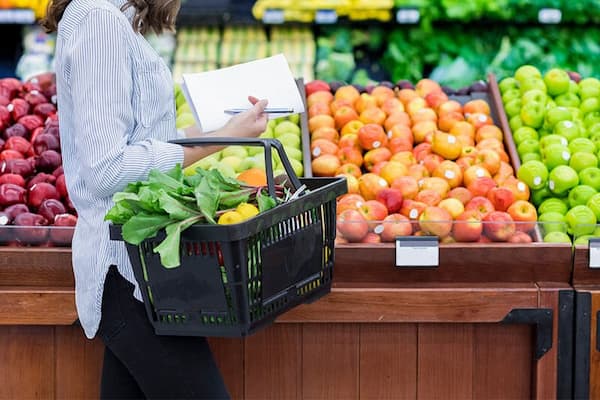
Europe is a market with a strictly controlled and highly demanding post-inspection stage.
According to Mr. Tran Van Cong, Agricultural Counselor of Vietnam in Europe, each year, the European market imports vegetables and fruits about 120 billion USD, accounting for 40% of the total global import and export turnover of fruits and vegetables. However, Vietnam's fruit and vegetable export turnover to Europe only reached about 190 million USD, accounting for a very small proportion.
In the structure of Vietnamese vegetables and fruits exported to Europe, fresh products account for about 70%, and processed products account for 30% (fruit juices and frozen juices account for a large proportion). European people are tending to green consumption and have a high demand for nutritious, healthy food, plant products to replace animal products.
Sharing more about this issue, Dr. Ngo Xuan Nam, Deputy Director of the SPS Vietnam Office, informed that the EU is particularly interested in residue levels in both fresh fruit and processed and dried products.
“Recently, at the 83rd session of the SPS-WTO Committee, we worked with the EU on this issue. The side commits to work closely with Vietnam to enhance information, as well as unify measures to control and notify, to promote trade in agricultural products, "said Mr. Nam.
The EU is also the region with the most SPS notifications to Vietnam in the first 6 months of 2022, along with Japan, Brazil, Canada and the US. The leader of SPS Vietnam said that this is in line with the current law of international advocacy.
In addition to the problem of residue, Mr. Hoang Xuan Khang, representative of international Fresh Group Company, a unit specializing in the production and import of vegetables, tubers and fruits in the European market shared, the biggest difficulty for Vietnamese businesses South when exporting to the EU market is food safety standards, traceability.
To penetrate deeper into this difficult market, Mr. Khang suggested that state management agencies set out policies to help businesses, especially small and medium-sized enterprises, to achieve certification of standards. basic infrastructure. That is the prerequisite step, before choosing the right product and marketing strategy.
For agricultural businesses, Mr. Khang pays attention to the design and packaging stages suitable for the European market. In particular, the issue of environmental friendliness is one of the factors that you are particularly interested in.
“For processed products, Vietnam can fully access the European market with frozen or canned vegetables and fruits. Consumers here prioritize convenience in the way they are processed," said Vietnam's Agricultural Counselor in Europe, Tran Van Cong.
Ms. Vu Kim Hanh, Chairman of the Association of High Quality Vietnamese Products, suggested 10 food trends of the world today.

Firstly, at present, global people are tending to be interested in plant-based foods, healthy foods and protein alternatives.
Second, the role of microorganisms is increasingly focused, through which factors beneficial to microorganisms and the gut are more interested by consumers.
Third, consumers are tending to return to the "origin", looking for foods that are local advantages.
Fourth, the requirement to experience food is gradually becoming extremely important.
Fifth, consumers are upholding their shared responsibility in forming a reliable, transparent, sustainable and environmentally friendly food network.
Sixth, after the Covid-19 pandemic, people's consumption habits are changing drastically.
Seventh, new technology in the food processing industry must always be available with individualized stages of nutrition, biology or alternative protein factors.
Eighthly, improving the quality of food by processing can contribute to increasing the price of products accompanied by an increase in quality, and at the same time will help prevent food waste.
Ninth, the link between the voice of consumers and brands is becoming more and more closely formed. Consumers will control the legitimacy, quality and sustainability of food brands.
Tenth, the way you choose your food will shape your personal brand. Consumers are now tending to apply personalization factors to their purchasing decisions.






.png)